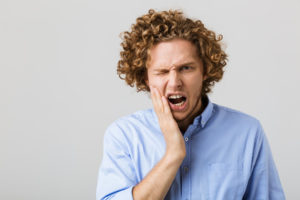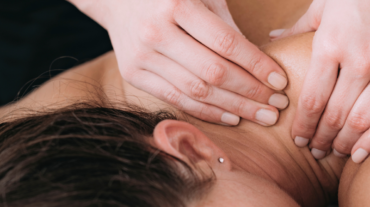 How is TMJS related to muscles and massage?
How is TMJS related to muscles and massage?
Many people don't realize how beneficial massage therapy can be for pain in your temporomandibular joint (the condition of chronic pain commonly known as 'TMJ syndrome' or TMJS). Because your TMJ connects your jaw to the side of your skull, symptoms can include pain and muscle spasms in your head, mandible, neck and shoulder muscles. In addition, you might have limited ability to open your mouth, as well as headaches, earaches, or dizziness.
In treating TMJS, your massage therapist will likely focus treatment on your chewing muscles, which include your temporalis (which elevates, retracts, and assists in closing your mandible), your masseter (which elevates and closes your mandible), your medial pterygoid (which also elevates your mandible and helps with closing your mouth), and your lateral pterygoid (which depresses, opens, and protrudes your mandible while also moving it laterally). In addition, your massage therapist will probably massage your neck muscles and your pectoralis major (chest) and sternocleidomastoid (neck and shoulder) muscles. Note that intra-oral massage (with gloved hands, of course) is necessary to treat your medial and lateral pterygoid muscles.
Essentially, to treat TMJS your massage therapist will work on reducing muscle tension and facilitating relaxation in your jaw, neck and shoulder muscles. This can be very beneficial as most people tend to hold a great deal of tension in these muscles from stress, which can be an enormous contributor to the pain from TMJS. Posture is another factor that can exacerbate TMJS, so your massage therapist may give you some exercises to improve how you hold your neck and head, and thus your jaw.
What can you do after your massage?
Self-massage at home on your jaw at can help somewhat – just be sure that you're massaging muscle and not bone! Use your middle finger of each hand to gently work on the muscles around your TMJ, working in small circles. Then try using your index, middle and ring fingers together to work on the rest of your jaw, making sure that you apply the right amount of pressure, and always working in small circles. Try to imagine the muscles relaxing while you do this.
Exercises to help stop clenching are also very helpful: 1.Try to allow your jaw to hang open for several minutes, keeping your teeth at least one inch apart. 2. Holding your chin with two fingers and using them to gently open and close your mouth several times can also be very relaxing.
Otherwise, look for ways to reduce stress in your life. While your body has become accustomed to holding stress in certain spots, you can train yourself to handle stress better and therefore reduce the amount of tension in these spots.
By Richard Lobbenberg, BSc BHSc DAc
For more information, and to obtain your own free TCM diagnosis, contact us.
These links may also be helpful:






 How is TMJS related to muscles and massage?
How is TMJS related to muscles and massage?
